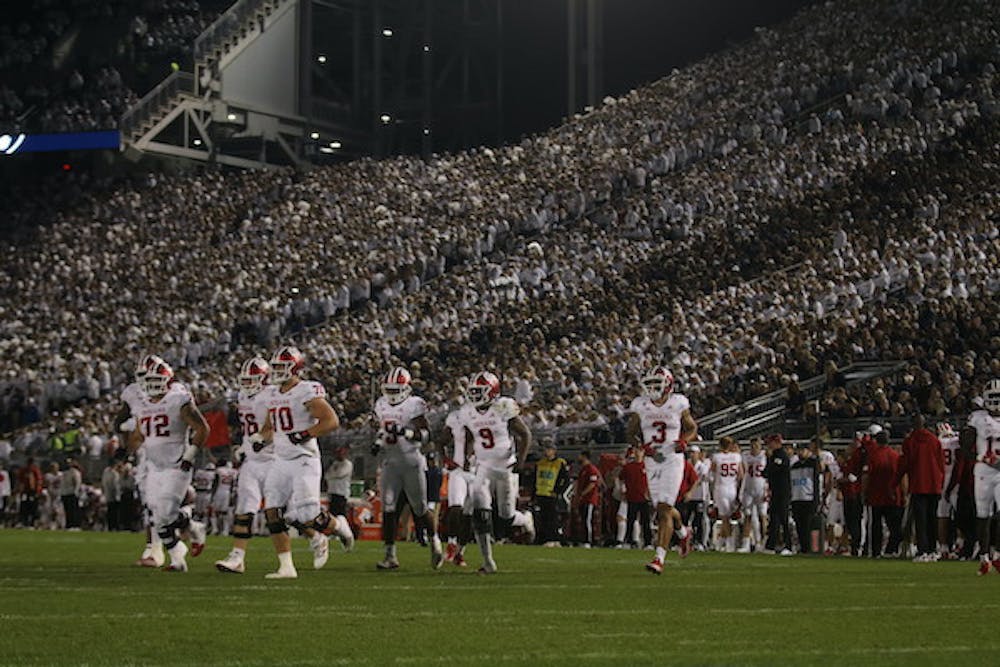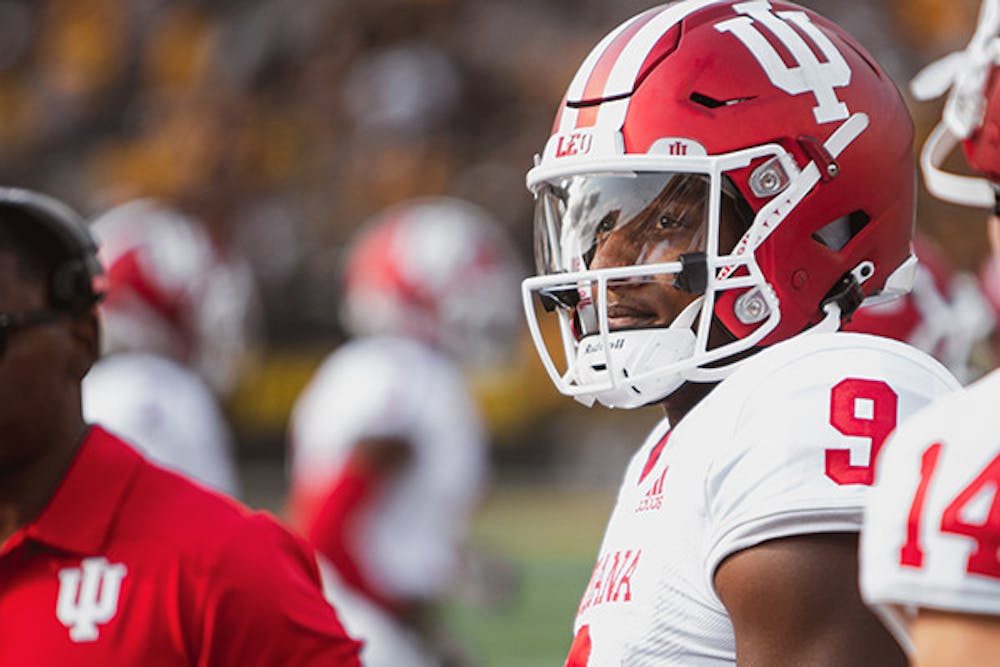There were few questions about what Indiana could rely upon on a game-by-game basis last season. The defense was going to create turnovers. They were going to stymie opponents in the red zone. On the other side of the ball, Indiana’s offense was going to capitalize off those takeaways.
The Hoosiers were the tougher team. They made opportunistic plays.
It led to a historic 6-2 season, one in which Indiana ascended all the way to No. 7 in the AP Poll and officially introduced itself onto the national stage.
Among other factors, there were two elements crucial to Indiana’s identity last season: turnover margin and production in the red zone.
Last year, the Hoosiers were tied for 10th nationally in turnover margin. They had the top-ranked red-zone defense in the nation.
This season?
Those characteristics are absent.
The Hoosiers currently rank 103th in turnover margin. Their red-zone defense is 117th in the nation.
We’re five games into the season. The Hoosiers are 2-3. Indiana still hasn’t established an identity.

First, it’s unfair to discount the arduous schedule that Indiana has played. Three of its first five games have come against teams that are now ranked in the top five of the AP Poll — No. 3 Iowa, No. 4 Penn State and No. 5 Cincinnati. There’s not much wiggle room to figure out exactly what type of team you are when facing that opening schedule. The problem, though, is that it won’t get much easier: three of Indiana’s remaining seven opponents are currently ranked in the top 11.
But a certain phrase has been repeated over the course of the season.
Micah McFadden after Saturday’s loss: “I think guys need to take a look in the mirror.”
Cam Jones after Saturday’s loss: “Guys can look themselves in the mirror.”
Head coach Tom Allen after the loss to Iowa: “You’ve got to be able to look yourself in the mirror.”
It sounds like a team that’s still searching for an identity.
Indiana’s defense has undoubtedly been the more consistent side of the ball. There have still been flaws like breakdowns in the secondary against Western Kentucky and a second half collapse against Cincinnati following McFadden’s ejection. But for the most part, like against Penn State, Indiana’s defense has kept them in games.
From solely a yardage standpoint, Indiana’s defense has actually been better this season than last. The Hoosiers allowed 378 yards per game last season versus 349 yards per game this season.
The difference, however, is red-zone efficiency and forcing turnovers — two elements that Indiana thrived in last season, but have held them back this year.
Last season, Indiana’s defense forced turnovers at an unnatural rate. The Hoosiers ranked fourth in the nation in takeaways with two and a half per game. They were tied for 13th in turnovers gained, including 17 interceptions (second in the nation). Their top red-zone defense held opponents to score on just 64 percent of its red-zone appearances.
This season, though, Indiana has forced just 1.2 turnovers per game — less than half of what it did last season — which is tied for 88th in the nation. Indiana is tied for 74th in turnovers gained, including just two interceptions. Indiana’s red-zone defense has allowed opponents to score on 94 percent of their opportunities.
There are a few causes for these changes. First, Indiana lost safety Jamar Johnson, who accounted for five of those takeaways, to the NFL. Also, the Hoosiers have been riddled with injuries. Cornerback Chris Keys tore his ACL, starting safety Devon Matthews was out for two games, and defensive backs Jaylin Williams, Reese Taylor and Tiawan Mullen have all missed varying amounts of time.
Indiana has had significantly less pressure on the quarterback, which could account for the decrease in takeaways. The Hoosiers were 15th nationally in sacks per game last season. This year, they rank 107th.

The offense, however, has been by far the most pressing issue for Indiana this season and there is a wide variety of blame to go around. Quarterback Michael Penix Jr. never quite got into a rhythm, besides the game against WKU.
The offensive line, though, hasn’t given Penix Jr., or Jack Tuttle for that matter, much of a chance. Playmakers on the outside, especially Ty Fryfogle, have been dropping passes. Many others will point to the lack of creativity in the play-calling.
But again, red-zone efficiency and turnovers — two key elements of Indiana’s success from last season — have been subpar this year.
Last season, Indiana capitalized on the chances its defense created. While not eye-popping, the Hoosiers were 62nd in the nation in red-zone offense, scoring touchdowns on 23 of their 35 red-zone attempts (66 percent).
This season, however, Indiana’s red-zone production has dropped. Indiana ranks 102nd nationally in red-zone offense, scoring touchdowns on just 11 of 21 attempts (52 percent). Against Cincinnati, the Hoosiers came up with zero points on three red-zone appearances. Against Penn State, it happened twice again.
There’s also the issue of turnovers. Last season, the Hoosiers, who again were tied for 10th in turnover margin, gave away just five interceptions. This season, however, Penix Jr. and Tuttle have already combined to throw eight interceptions. It’s also been a matter of the timing of the turnovers. Against Cincinnati, running back Tim Baldwin Jr. fumbled at the goal line in what would’ve been the go-ahead score in the fourth quarter.
Much of Indiana’s inconsistencies, in both the passing and running games, can be attributed to struggles from the offensive line. There were a variety of schematic and injury-related shifts within the group throughout the first few weeks that didn’t help the cohesiveness.
Last season Indiana’s offensive line gave up 10 sacks in eight games. This season, they’ve already given up nine in five games. Because of that, there’s not one facet of the offense that can be relied upon as a consistent threat.
In all, the Hoosiers haven’t been the tougher team. They haven’t made opportunistic plays.
There is still plenty of season left, but Indiana is quickly losing traction to achieve its lofty preseason goals. The bye week is here, giving the Hoosiers extra time to find their unique spark.
Maybe they can look themselves in the mirror and figure out who they really are.

Tachman: Indiana football is still searching for its identity five games into the season
More





